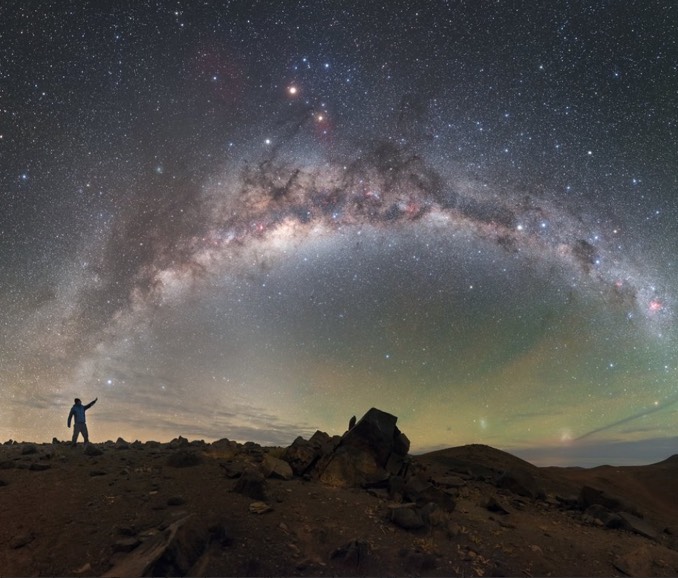
The Milky Way is a fairly normal spiral galaxy made up of 200 billion to 400 billion suns orbiting a nucleus that contains a 4-million-solar-mass black hole. But all of that material contributes just a few percent of the galaxy’s total mass. The rest is made up of dark matter, the mysterious, unseen substance that provides the gravitational glue holding the galaxy together.
Using precise observations of remote globular clusters by the European Space Agency’s Gaia spacecraft and NASA’s Hubble Space Telescope, astronomers have come up with the most accurate measurement yet of the Milky Way’s total mass. It contains about 1.5 trillion times the mass of Earth’s Sun.
“We want to know the mass of the Milky Way more accurately so that we can put it into a cosmological context and compare it to simulations of galaxies in the evolving universe,” said Roeland van der Marel of the Space Telescope Science Institute. “Not knowing the precise mass of the Milky Way presents a problem for a lot of cosmological questions.”

The lightest galaxies weigh in at about a billion solar masses while the heaviest can tip the scales at some 30 trillion. The Milky Way’s 1.5 trillion solar masses is considered normal for a galaxy of its brightness.
To come up with that number, Gaia tracked 34 globular clusters at distances up to 65,000 light years while Hubble zoomed in on a dozen more remote clusters positioned up to 130,000 light years away.
Globular clusters are made up of the oldest known stars and are thought to have formed before the Milky Way’s spiral disc developed. By tracking how fast such cluster move across the sky, astronomers can calculate how much matter, dark or “normal,” must be present to provide the observed gravitational acceleration.
“The more massive a galaxy, the faster its clusters move under the pull of its gravity,” said N. Wyn Evans of the University of Cambridge. “Most previous measurements have found the speed at which a cluster is approaching or receding from Earth, that is the velocity along our line of sight. However, we were able to also measure the sideways motion of the clusters, from which the total velocity, and consequently the galactic mass, can be calculated.”



